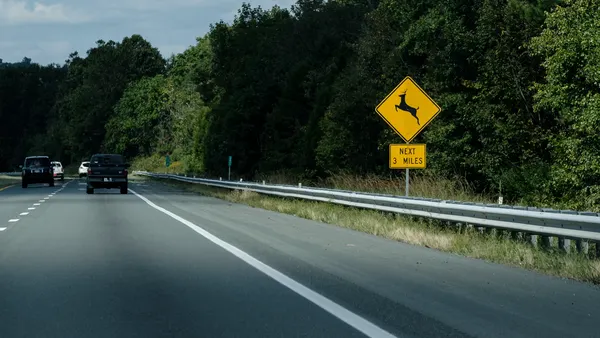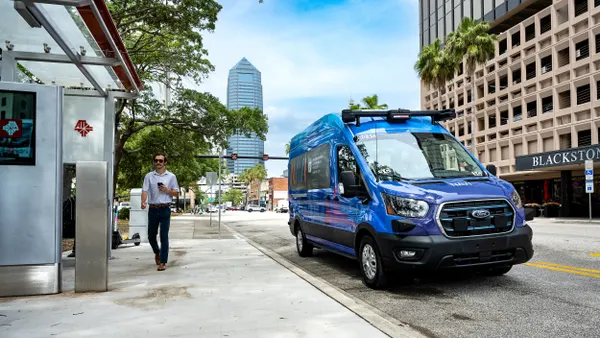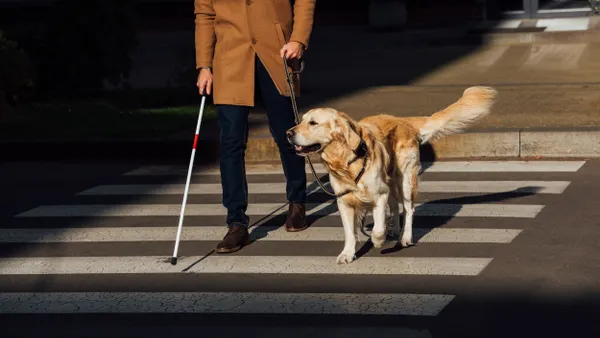YPSILANTI, MI — A stone’s throw from Willow Run Airport, what was once the site of an effort to bolster the country’s fleet of warplanes is now the American Center for Mobility (ACM), representing a new generation of innovation.
Just off U.S. Route 12 in Ypsilanti, MI, the ACM is one of 10 proving grounds for autonomous vehicles (AVs) approved by the U.S. Department of Transportation (USDOT).
With more than 500 acres of space, and big plans to expand its scope and the activities on campus, its leaders are confident the center will be a crucial stepping-stone to AV rollout. "We want to continue that spirit of innovation,” Soraya Kim, ACM’s Chief Innovation Officer, said during a presentation last week at the center.
The ACM’s location is no stranger to innovation. Early in World War II, then-President Franklin D. Roosevelt approached carmaker Henry Ford and asked if he could use the area to increase the rate of production on bombers for the U.S. Air Force to one a day. Ford was up to the task, and soon Willow Run was cranking out fully-constructed planes at an astonishing rate of 25 a day in a 5 million-square-foot facility.
Among his 43,000 workers was Rose Monroe, who moved to Michigan from Pulaski County, KY and was synonymous with "Rosie the Riveter," a fictional depiction of working women during World War II.
Even in war time, the tax man cometh, and Ford had to not only manufacture planes, but ad hoc tax loopholes. With the plant’s exit point for newly-built planes right on the border between Washtenaw and Wayne Counties, local officials told Ford that if those planes entered Wayne County he would owe them tax revenue. Instead, Ford built a series of turntables to keep the planes in Washtenaw County, and so avoid paying taxes in another jurisdiction.
Since those heady days when 8,400 bombers were built, Willow Run has continued to innovate. The first interstate highways were built there, the first airport car rentals were out of a hangar, and the first hotel at a modern airport was there, too. But since 2016, the site has been dedicated to testing AVs.
The present
Initially, the ACM may not feel like an impressive AV testbed. A guard controls who goes in and out of the open-air facility, while only one small sign indicates where visitors may reside.
But once inside the still-under-construction facility, those who want to test AVs are greeted with miles of streets, some of which were reclaimed from the Michigan Department of Transportation (MDOT) and several real-world scenarios, with more to follow.
The state helped to launch ACM with $65 million in funding, with the private sector kicking in $50 million from the likes of software companies, car companies and others. ACM also formed a 15-member academic consortium made up of higher education institutions from around the state to help with research and offer opportunities such as jobs and mentorship to students.
The main testing area being used right now is a highway loop, with three lanes in each direction over a 2.5-mile course known as the ACM Freeway. Cars drive in zones with three different speed limits — 65, 55 and 50 miles per hour — with two lanes covered in asphalt and another in concrete.
Over the course of the 2.5-mile loop, AVs will have to contend with the usual kinds of disruptions human drivers have to contend with, including potholes, construction zones, lay-bys and exit and entrance ramps, which are built to MDOT standards. Sections of highway, which used to be westbound lanes of U.S. Route 12, are also cut up from wear and tear.
And connected to the highway is a 700-foot-long tunnel, again built to MDOT standards, designed to test AVs under a certain amount of pressure. The curving tunnel, built out of corrugated steel so GPS signals bounce off and become unreliable, forces cars to continuously adapt. The AV must then deal with coming out of the darkness into light, having not seen the end of the tunnel until relatively close to the end.
"A vehicle goes in, it can't see the light at the end of the tunnel, it's unable to get strong full signal strength, so how do your sensors, your camera, your lighting, how do all your sensors react to that?" Kim said.
The future
The ACM has ambitions to become bigger and offer even more testing facilities. Over time, Kim said, it plans to open zones built to look like rural, urban and commercial environments, to see how the AVs react in different situations. "What we're building are real-world scenarios. Unlike any other test facility that currently exists, we are building over 500 acres of real-world scenarios," she said.
Kim added that the scenarios will take inspiration from some of the problems faced by drivers, especially in cities. She pointed to a troublesome intersection in downtown Atlanta with multiple lanes going in different directions all converging on one point that the ACM would look to replicate.
And to help with research, the ACM plans to open a 27-acre technology park, which will include a shared space for business, academics and government entities all under one roof. "You're going to be at a place where there are lots of companies testing, there will be academia here, there will be standards people here, government people here," she said. "So when you're here, you're going to have access to a lot of companies, organizations and individuals that you normally wouldn't have."
And AV companies, of which there are several already in place at ACM, can rent space in short-term and long-term garages on which they can test the technology and tune up their cars before taking them outside. The hope is that it becomes a hub for automotive innovation. "We truly do believe that in order to advance all that we're doing in this space we need to collaborate, we need to discuss and share best practices," Kim said.
One of the major debates now is over AV safety standards, with questions over that causing national legislation to stall in the U.S. Senate. Another ambition the ACM has is to become a place where standards-writers can come together and formulate policy, albeit with ACM staying out of that field and letting the experts take the lead. "We fully envision that when our buildings are up, the meetings will be convened here, and to the extent that any demonstration or validation is needed, they can go outside and have a full facility that's able to accommodate that," Kim said.
The ACM also plans to have laboratories of various kinds, including one to discuss areas like cybersecurity and the use of analytics, two other areas of concern for AV researchers.
The plan is for the ACM to be fully operational by the end of 2019, and to add another chapter not only to the storied history of Willow Run, but also to Michigan’s. "We are in the hub of automotive,” Kim said. "You can't find a greater density of different auto companies than here in Michigan. So we want to be able to take advantage of that and improve these wonderful technologies here in Michigan."











